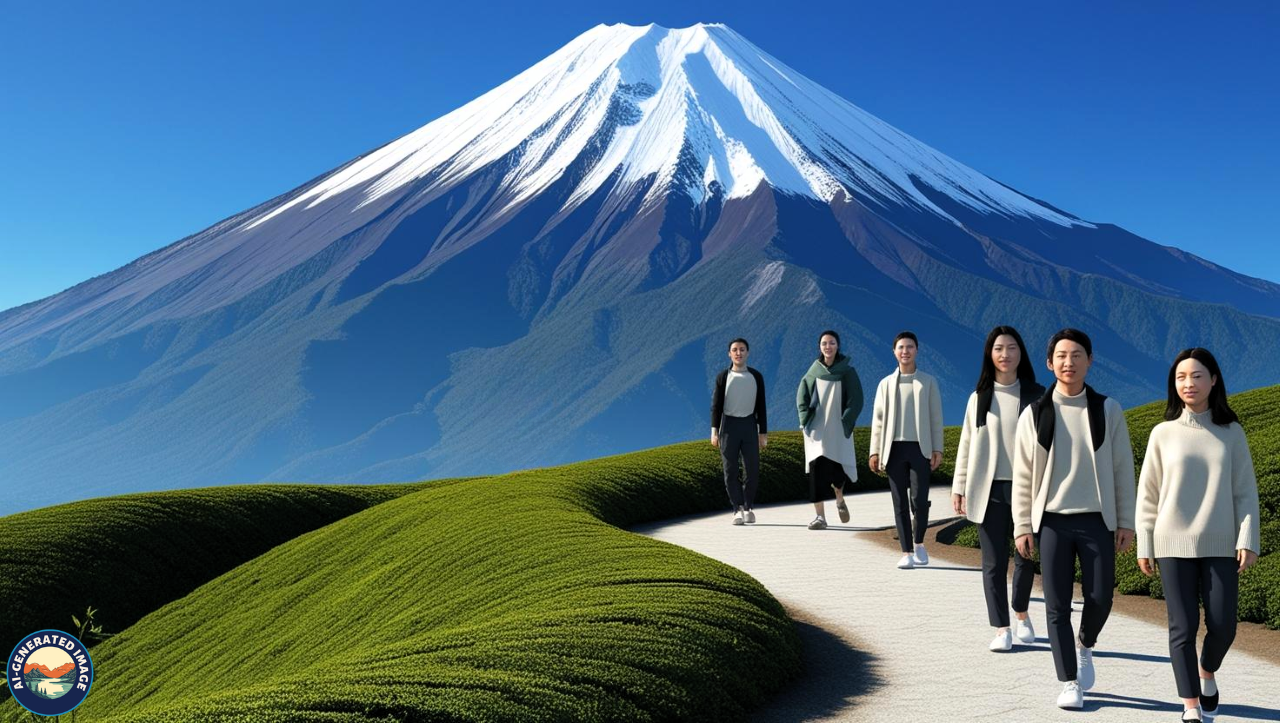Introduction
Standing tall at 3,776 meters (12,389 feet), Mount Fuji is the highest and most iconic mountain in Japan. Its near-perfect conical shape and snow-capped summit have captivated the imagination of locals and travelers for centuries. Known as “Fujisan” in Japanese, this majestic volcano is more than a geographical landmark—it’s a cultural treasure, a spiritual destination, and a dream for climbers and sightseers. In this detailed guide, we explore the fascinating facets of Mount Fuji—from its mythological roots to practical travel tips for experiencing its magic up close.
The Myth and Majesty of Mount Fuji
Mount Fuji is deeply embedded in Japanese spirituality and folklore. Revered as a sacred mountain in both Shintoism and Buddhism, it has long been a site of pilgrimage. According to Shinto legends, the goddess Konohanasakuya-hime resides on the mountain, and ancient practitioners believed that ascending Mount Fuji would bring purification and enlightenment.
Its image has been immortalized through centuries of art and poetry. Most famously, Katsushika Hokusai’s Thirty-Six Views of Mount Fuji captured its beauty from various angles, influencing not only Japanese aesthetics but also Western Impressionists.
In recognition of its cultural value, Mount Fuji was designated a UNESCO World Cultural Heritage Site in 2013, honoring both its natural splendor and historical significance.
Geography and Geology
Mount Fuji is situated on Honshu Island, between Shizuoka and Yamanashi prefectures, approximately 100 kilometers southwest of Tokyo. It is a stratovolcano, formed over several hundred thousand years by overlapping eruptions from multiple volcanic layers.
Interestingly, Mount Fuji is composed of three volcanoes stacked atop one another: Komitake, Kofuji, and Fuji, the youngest and most active layer. The most recent eruption occurred in 1707, known as the Hōei Eruption, which deposited ash as far as modern-day Tokyo. Though dormant since then, Fuji remains classified as an active volcano and is closely monitored by geological agencies.
Best Time to Visit
Mount Fuji presents different charms throughout the year, but your experience will vary depending on when you visit:
-
Climbing Season (July to Early September):
-
Trails are fully open, the weather is relatively stable, and support facilities like mountain huts are available.
-
Spring (March to May):
-
Cherry blossoms begin to bloom in surrounding areas, offering magical views with Fuji’s snowy peak in the background.
-
Autumn (October to November):
-
The foothills and nearby lakes explode in color with vivid red, orange, and yellow foliage.
-
Winter (December to February):
-
While climbing is prohibited, the clear skies of winter make it one of the best seasons for viewing and photography.
For the best visibility, plan your visit early in the morning or during late afternoon hours when the mountain is most visible.
Climbing Mount Fuji: Routes and Tips
Main Climbing Trails
Mount Fuji features four official trails, each offering unique views and challenges:
-
Yoshida Trail
-
The most popular and well-equipped
-
Located on the Yamanashi side
-
Offers the best infrastructure and night-climb options
-
-
Fujinomiya Trail
-
The steepest but shortest trail
-
Located on the Shizuoka side
-
Suitable for experienced climbers seeking a quick summit
-
-
Subashiri Trail
-
Features scenic lower slopes with dense forests
-
Less crowded
-
Joins the Yoshida Trail near the 8th station
-
-
Gotemba Trail
-
The longest and least populated route
-
A demanding ascent with fewer facilities
-
Ideal for solitude and seasoned hikers
-
Helpful Climbing Tips
-
Acclimatization is key—rest at a hut before attempting the final ascent to minimize altitude sickness.
-
Many climbers start their journey at night to witness “Goraiko”, the sunrise from the summit.
-
Essential items include warm clothing, headlamps, rain protection, and snacks.
-
Though optional, contributing a small ¥1,000 donation at the base supports conservation efforts.
Mount Fuji’s Five Lakes Region
The Fuji Five Lakes, or Fujigoko, formed by ancient lava flows, are found at the northern base of Mount Fuji. They offer peaceful scenery and various recreational options:
Lake Kawaguchiko
-
-
The most accessible and developed
-
Known for its panoramic Fuji views, ropeway, and hot springs
-
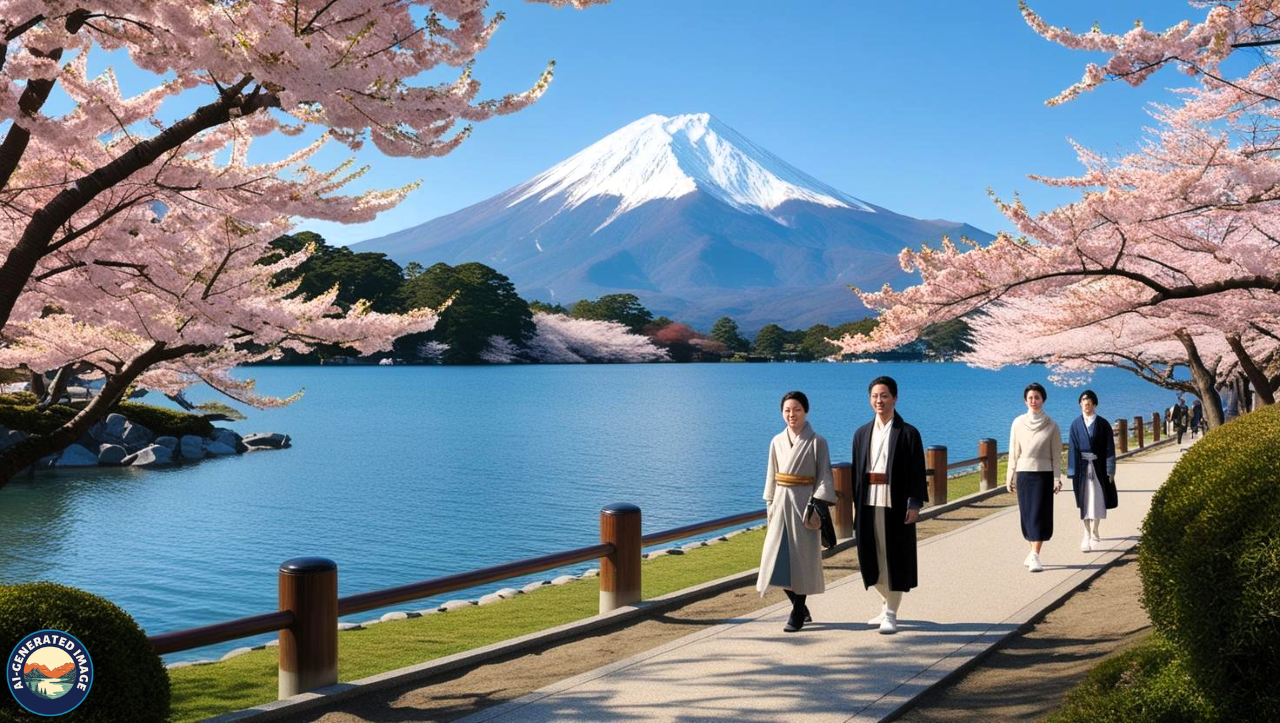
Lake Yamanakako
-
-
The largest of the five
-
Popular for boating, fishing, and camping
-
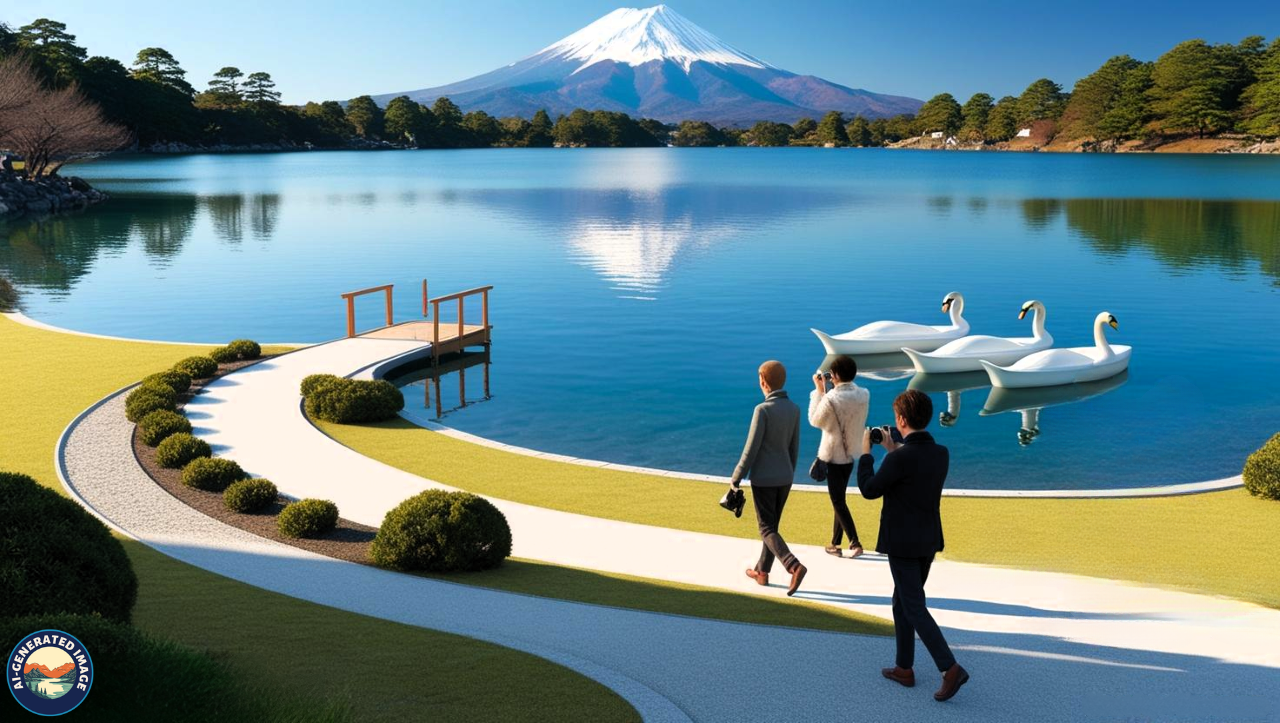
Lake Saiko
-
-
Secluded and surrounded by forests
-
Near lava caves like the Ice Cave and Bat Cave
-

Lake Shojiko
-
-
Small and less commercialized
-
Offers peaceful, unspoiled nature
-
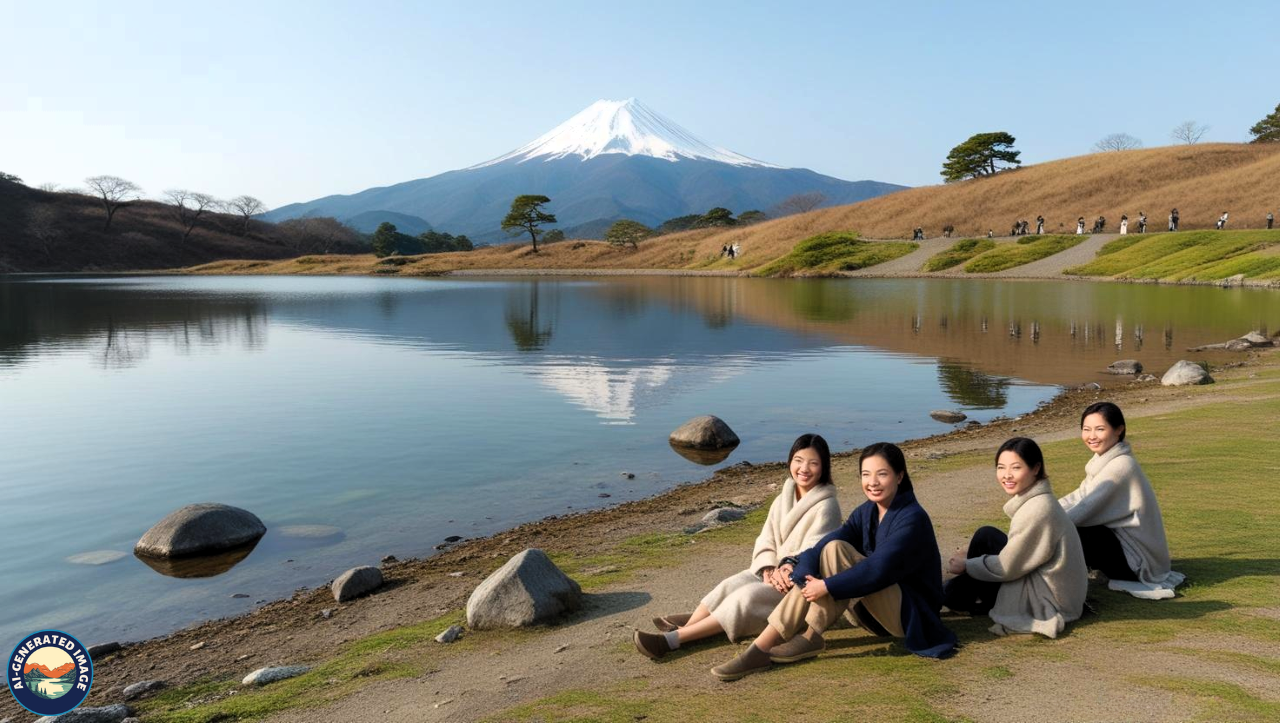
Lake Motosuko
-
-
The deepest of the five
-
Known for the view featured on the back of the ¥1,000 banknote
-
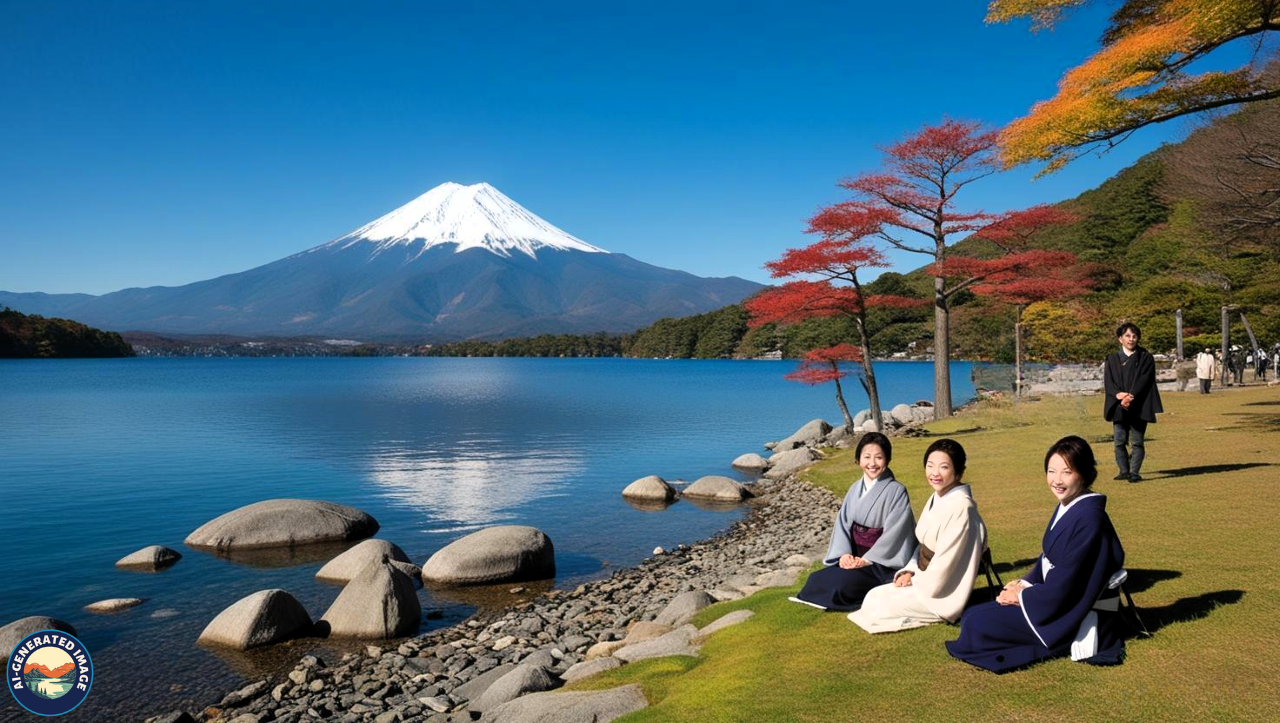
Each lake offers a different way to appreciate Mount Fuji, whether you’re looking for adventure, relaxation, or photography opportunities.
Iconic Viewpoints and Photography Spots
Chureito Pagoda
This stunning five-story pagoda, located in Arakurayama Sengen Park, offers a jaw-dropping view of Mount Fuji, especially in spring when cherry blossoms frame the scene.
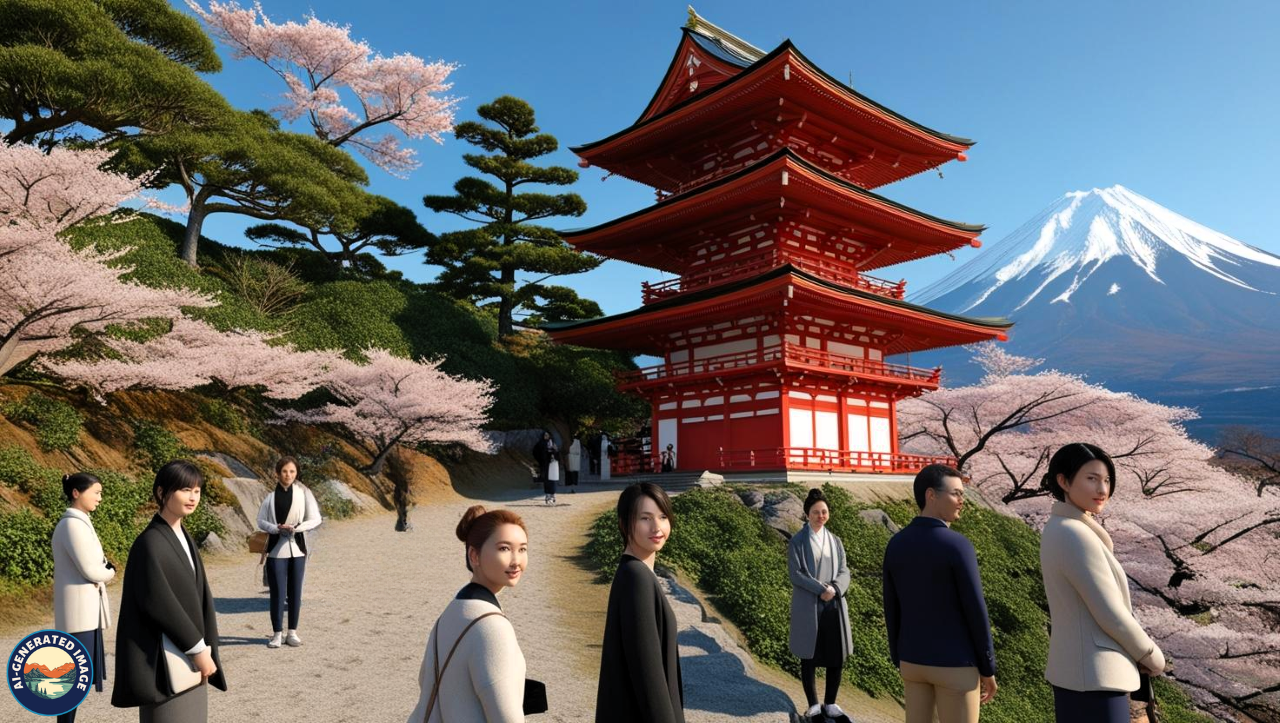
Lake Kawaguchiko
A favorite for its tranquil reflection of Fuji on calm water, particularly during the early morning.
Oshino Hakkai
A charming old-world village with spring-fed ponds and historic thatched homes—perfect for traditional scenery.
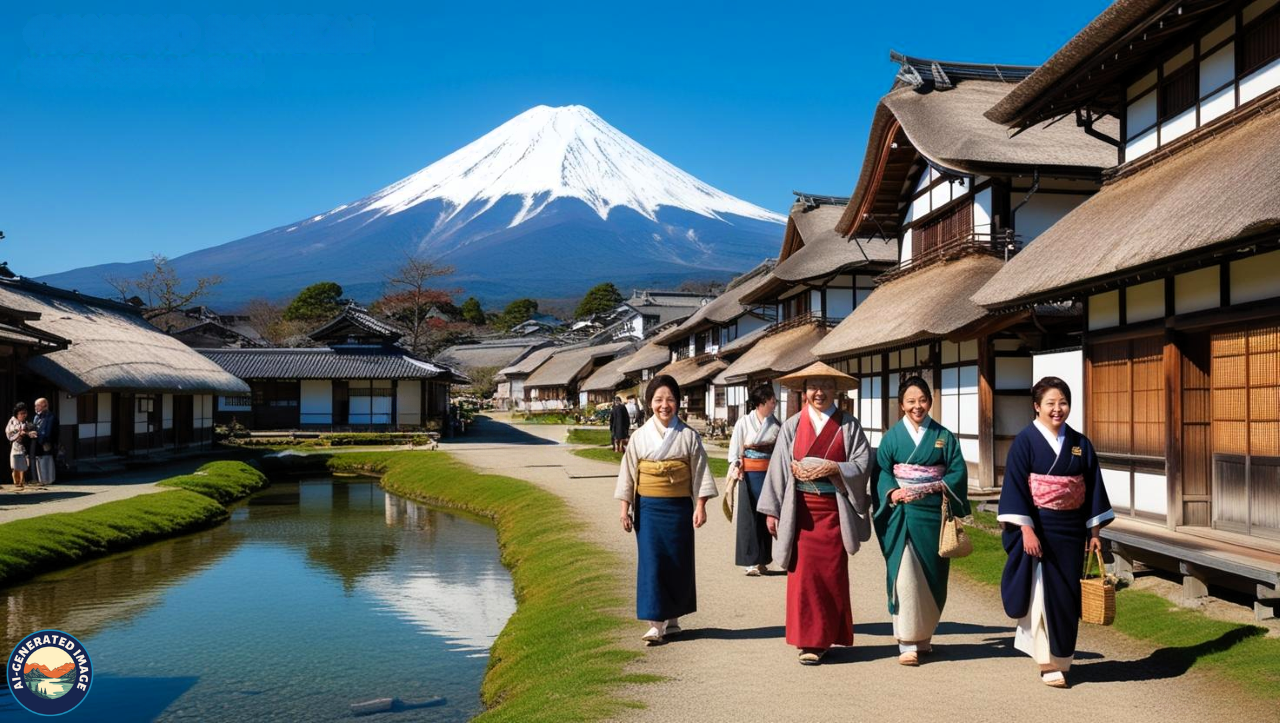
Fuji Shibazakura Festival
Held every April and May, this festival features thousands of pink moss flowers blooming at the base of the mountain, creating vibrant carpets of color.
For photographers, each spot offers a postcard-perfect moment to capture the majesty of Japan’s most beloved peak.
Cultural and Spiritual Highlights
Mount Fuji isn’t just a natural wonder—it’s a site of spiritual significance. The Fujisan Hongu Sengen Taisha Shrine, at the foot of the mountain in Fujinomiya, is the most prominent among over 1,300 shrines dedicated to the mountain goddess.
For centuries, climbing Fuji was considered a sacred ritual rather than a leisure activity. Monks and ascetics would make the journey barefoot, meditating along the way. Today, this spiritual essence remains alive, especially for those who begin their climb at one of the historical shrines.
How to Reach
From Tokyo
-
By Train:
-
Take the JR Chuo Line to Otsuki, then transfer to the Fujikyu Railway to Kawaguchiko Station.
-
By Bus:
-
Express buses from Shinjuku or Tokyo Station take about 2 to 2.5 hours.
From Kyoto/Osaka
-
Take the Tokaido Shinkansen to Mishima or Shin-Fuji Station, then transfer to local buses heading toward the mountain.
Public transportation around Fuji is efficient, especially during peak tourist seasons, though booking in advance is recommended.
Things to Do Around Mount Fuji
Beyond climbing and sightseeing, the area around Mount Fuji offers countless activities:
-
Fuji-Q Highland:
-
An adrenaline-packed amusement park with world-record roller coasters.
-
Mount Fuji World Heritage Centre:
-
Interactive exhibits detailing the mountain’s geology, history, and spiritual heritage.
-
Fuji Safari Park:
-
A drive-through wildlife experience with exotic animals.
-
Cycling and Nature Walks:
-
Numerous scenic routes for biking and hiking surround the mountain.
-
Fishing and Boating:
-
The lakes offer peaceful water activities with stunning backdrops.
These attractions ensure a memorable trip even for those who prefer not to climb the mountain.
Where to Stay
Accommodations in the Mount Fuji area range from luxury resorts to budget-friendly lodges:
-
Traditional Ryokans:
-
Experience authentic Japanese hospitality with tatami mats, futons, and hot springs.
-
Hotels in Kawaguchiko:
-
Ideal for first-time visitors and families, with excellent mountain views.
-
Cabins and Guesthouses:
-
Found in quieter areas like Shojiko or Saiko for travelers seeking solitude.
Where you stay often depends on whether you’re climbing, sightseeing, or relaxing by the lakes.
Mount Fuji in Popular Culture
Mount Fuji is a global cultural icon. It appears frequently in Japanese anime, films, and literature, and even in global franchises like Pokémon and Final Fantasy. International movies such as The Last Samurai have featured its silhouette, reinforcing its image as the epitome of Japan’s natural beauty.
Its presence in artwork, advertisements, and digital media continues to elevate its global profile, making it a universally recognized symbol of Japan.
Environmental Preservation and Responsible Tourism
As visitor numbers rise, so do concerns about sustainability. Authorities have implemented several eco-friendly measures:
-
Encouraging climbers to donate a voluntary fee for trail maintenance
-
Promoting “leave no trace” principles
-
Installing eco-toilets and managing waste disposal
-
Monitoring climber numbers to avoid over-tourism
Being mindful of Fuji’s delicate ecosystem ensures that future generations can experience its majesty as we do today.
Conclusion
Mount Fuji is more than a mountain—it’s a living symbol of Japanese identity, a beacon of natural harmony, and a destination that stirs the soul. Whether you climb to its peak, relax by its tranquil lakes, or simply admire it from afar, Fuji leaves a lasting impression. It reminds us of the power of nature, the depth of tradition, and the timeless beauty that can be found when we pause and look up.
FAQs
Is Mount Fuji safe to climb?
Yes, during the official climbing season, the trails are well-maintained, and emergency services are available. However, caution is always advised.
Do I need to be very fit to climb it?
While you don’t need to be an athlete, moderate fitness is necessary due to steep ascents and high altitudes.
Can I visit without hiking?
Absolutely. Many come just for the views, hot springs, and cultural sites around the base.
Is it visible year-round?
Mount Fuji is best seen in winter and early mornings when the skies are clear. Summer often brings clouds that obscure the view.
How much does it cost to climb Mount Fuji?
Aside from travel costs, you may spend around ¥5,000–¥10,000 for huts and meals. The ¥1,000 donation at the base is optional but encouraged.
Are guided tours available?
Yes, several companies offer guided climbs with English-speaking guides and overnight stays.

